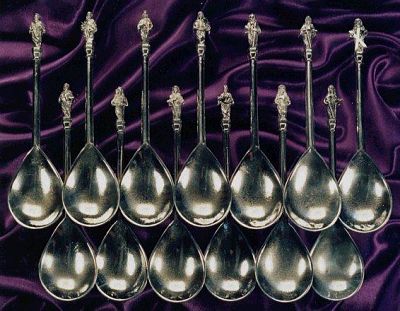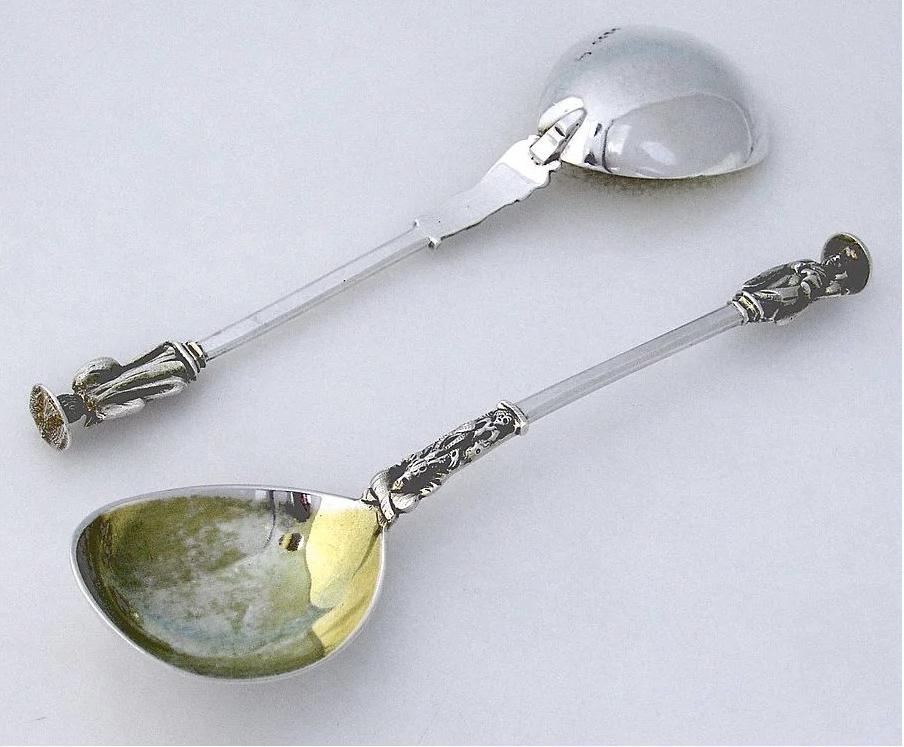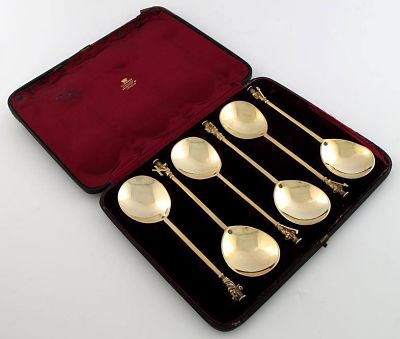 Silver spoons with fig shaped bowls and handles topped by figures of apostles, or in the case of the master spoon of a set of thirteen, by the figure of Christ. A number of full length figures of the Virgin Mary are also known. Popular in Britain, Germany and else where from about 1490 to 1675,they became collectable in Victorian times and have been faked, forged and reproduced ever since. No complete sets of 13 are known to remain from before the 1500's.
Silver spoons with fig shaped bowls and handles topped by figures of apostles, or in the case of the master spoon of a set of thirteen, by the figure of Christ. A number of full length figures of the Virgin Mary are also known. Popular in Britain, Germany and else where from about 1490 to 1675,they became collectable in Victorian times and have been faked, forged and reproduced ever since. No complete sets of 13 are known to remain from before the 1500's.The earliest finials on British spoons were the acorn knop from the 1200's, and the diamond point from the 1300's. The seal top with a flat disc above a rather architectural baluster, is the most common from the 1400's, but from the mid 1400's there were also heraldic finials, such as the lion sejant, or the head of the de la Pole Earls of Suffolk. The type known as the maidenhead, a bust length Virgin figure, was associated with the Mercers´Company, who used it in their crest. From around the Charles ll period until the early 1700's, the trefid or trifid terminal is common. Initials and occasionally a date are found pricked into the flat end. There will be on what would now be considered as the underside as spoons were then laid on the table with the bowls facing towards the table.

The maker´s mark is generally punched on the back of the stem near the bowl, but the London leopard´s head and some provincial town marks appear in the bowl itself close to the stem. In the 1600's bowls became more oval and stems a little flatter and less tapering.
The Victorians revived the design, in miniature, for coffee spoons, and modern fakers have often produced `apostles´ by reshaping stems and bowls of the 1700's spoons and soldering on cast figures. Usually only one mould was used for the figure although he may have a different attribute, Peter´s keys., Andrew's cross soldered on. Pairs of large apostle spoons in fitted boxes occur quite commonly from the turn of the 1800's and 1900's, usually given to commemorate some event of religious significance such as the laying of a foundation stone. The proportions and casting of modern examples are often too perfect.

